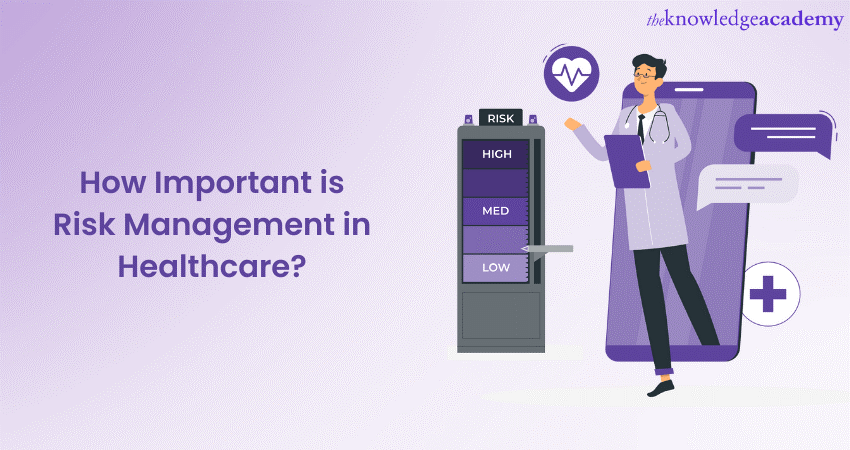How the Importance of Risk Management Drives Successful Project Outcomes
How the Importance of Risk Management Drives Successful Project Outcomes
Blog Article
Exploring the Significance of Risk Management for Effective Decision-Making Approaches
In the intricate globe of organization, Risk Management becomes a critical element in the decision-making process. The ability to recognize possible dangers and possibilities, and plan accordingly, can spell the difference in between success and failing. With devices such as SWOT and PESTEL, companies are furnished to make enlightened options, cultivating strength and adaptability in an ever-changing setting. Wondering how this works? Allow's unpack the characteristics additionally.
Understanding the Concept of Risk Management
Risk Management, a crucial part in decision-making, is typically misunderstood or oversimplified. Risk Management entails regimented and organized methods, making use of data and insightful analyses. From monetary unpredictabilities, legal responsibilities, tactical Management mistakes, to mishaps and natural catastrophes, it resolves various dangers - importance of risk management.
The Duty of Risk Management in Decision-Making Processes
In the world of critical preparation and service operations, Risk Management plays an essential role in decision-making procedures. Risk Management hence ends up being an important device in decision-making, assisting leaders to make enlightened choices based on a thorough understanding of the threats involved. Risk Management offers as an essential element in the decision-making processes of any kind of organization.

Just How Risk Management Boosts Strategic Planning
In the context of tactical preparation, Risk Management plays a critical duty. Launching with the identification of possible dangers, it even more prolongs to the execution of Risk reduction procedures. The duty of Risk Management is not fixed however dynamic, as it requires continuous monitoring and adjusting of approaches.
Determining Potential Threats

Applying Risk Mitigation
Having established the significance of determining prospective risks, the next action is to discover Risk reduction. This process includes developing and carrying out methods to handle recognized risks effectively. It is a vital element of tactical planning as it enhances decision-making by decreasing possible adverse end results. Risk mitigation strategies can vary from Risk avoidance, Risk transfer, to take the chance of reduction. Each strategy ought to be tailored to the details Risk, considering its prospective effect and the company's Risk tolerance. Moreover, efficient Risk reduction needs a deep understanding of the Risk landscape and the possible impact of each Risk. This understanding makes it possible for companies to focus on dangers and assign sources properly, making certain that the most significant hazards are resolved first.
Surveillance and Adjusting Methods
Though Risk reduction is a vital step in calculated planning, constant surveillance and adjustment of these methods is equally essential. This recurring process enables companies to identify new threats and reassess existing ones, guaranteeing the applied strategies remain efficient in the ever-changing organization environment. It likewise supplies a possibility to evaluate the success go to website of the Risk Management procedures, permitting modifications to be made where essential, further enhancing calculated preparation. Reliable surveillance and adjustment require making use of analytics and vital performance signs (KPIs) to determine efficiency. These devices give valuable data-driven insights that can inform tactical decision-making. Consequently, monitoring and adjusting Risk Management strategies is a vital element for enhancing an organization's durability and calculated planning.
Case Researches: Effective Risk Management and Decision-Making
In the world of service and finance, effective Risk Management and decision-making usually serve as the columns of prosperous business. These situations highlight the worth of astute Risk Management in decision-making processes. These situations emphasize the critical function of Risk Management in critical decision-making.
Devices and Techniques for Effective Risk Management
Navigating the complex maze of Risk Management requires the best collection of techniques and tools. These tools, such as Risk signs up and heat maps, help in recognizing and examining possible dangers. Techniques include both quantitative techniques, like sensitivity evaluation, and qualitative techniques, such as SWOT analysis. These help in focusing on threats based upon their prospective impact and chance. Risk reaction methods, a vital component of Risk Management, entail approving, staying clear of, transferring, or mitigating risks. Tracking and regulating dangers, via routine audits and testimonials, guarantee that the methods continue to be efficient. With these techniques and devices, decision-makers can navigate the complex landscape of Risk Management, consequently promoting informed and efficient decision-making.
Future Fads in Risk Management and Decision-Making Approaches
As we discover the substantial landscape of Risk Management, it comes to be apparent that the tools and strategies utilized today will certainly proceed to develop. The principle of Risk society, where every member of an organization is conscious and entailed in Risk Management, will gain extra prominence. These trends declare an even more aggressive and inclusive strategy in the direction of Risk Management and decision-making.
Conclusion

Risk Management thus comes to be a crucial tool in decision-making, helping leaders to make informed useful site choices based on a thorough understanding of the threats included. Risk reduction techniques can range from Risk avoidance, Risk transfer, to run the risk of decrease (importance of risk management). Efficient Risk reduction needs a deep understanding of the Risk landscape and the possible effect of each Risk. Risk response methods, an essential component of Risk Management, include accepting, staying clear of, moving, or mitigating risks. The idea of Risk culture, where every member of a company is mindful and involved in Risk Management, will certainly gain pop over to these guys extra prestige
Report this page